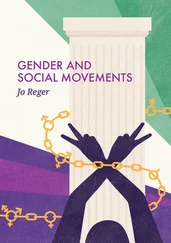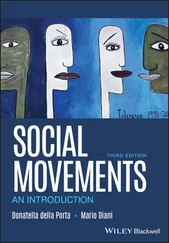Some of the mentioned innovative ideas about democracy have been at the basis of institutional experiments that were indeed inspired by the same principles of participation and deliberation. Besides engaging in internal practices of democratic innovation, social movements are in fact also carriers of innovation in institutions, performing this role in a variety of ways and with different results. In short, social movements raise claims not only on specific policies, but more broadly on the way in which the political system as a whole functions: its institutional and formal procedures, elite recruitment and the informal configuration of power (Kitschelt 1986). Movements have often obtained decentralization of political power and channels of consultation with citizens on particular decisions; appeals procedures against decisions by the public administration; the possibility to be allowed to testify before representative institutions and the judiciary, to be listened to as counter-experts, to receive legal recognition and material incentives. Repertoires of collective action, which were once stigmatized and dealt with as public order problems, have slowly become legal and legitimate (della Porta and Reiter 1998), while direct democracy has been developed as a supplementary channel of access to those opened within representative democracy (della Porta, O’Connor et al. 2017a). Social movements also contribute to the creation of new arenas for the development of public policy, such as expert commissions or specific administrative and political branches, for example state ministries or local bureaus on women’s and ecological issues in many countries. Within international organizations, such as the EU, movement activists have been co-opted by specific public bodies as members of their staff (Ruzza 2004) and opportunities for conflictual cooperation develop within regulatory agencies through consultation, to incorporation in committees, to delegation of power (Giugni and Passy 1998, 85). These institutions mediate social movement claims and even ally themselves with movement activists with whom they may have frequent contact.
In recent times, democratic innovations have included participatory arenas open to the participation of normal citizens in public debates on relevant (and often divisive) issues. Especially at the local level, there have been various attempts at increasing participation, through the creation of high-quality communicative arenas and the empowering of citizens. In fact, one can distinguish, with Graham Smith (2009), two main institutional formulas: assembleary, or oriented to the construction of a ‘mini-public’, usually selected by lot. The former in particular have seen the participation of social movement activists in neighbourhood assemblies or even thematic assemblies, neighbourhood councils, consultation committees, strategic participatory plans and the like. In particular, participatory budgets have spread from Porto Alegre, a Brazilian city of 1,360,000 inhabitants, to being recognized by the United Nations as one of the forty ‘best practices’ at global level (Allegretti 2003, 173). In order to achieve social equality and provide occasions for empowerment, citizens are invited to decide about the distribution of certain public funds through a structured process of involvement in assemblies and committees. The objectives of these institutions include effective prob-lem-solving and equitable solutions, as well as broad, deep and sustained participation. The participatory budget has been credited with creating a positive context for association, fostering greater activism, networking associations, and working from a citywide orientation (Baiocchi 2002). Even though the intensity of participation, its duration and influence, vary greatly between the various participatory devices, they all point towards the limits of a merely representative conception of democracy. The aim of improving managerial capacities, through greater transparency and the circulation of information, is linked with the transformation of social relations, by reconstructing social ties, fostering solidarity and eventually ‘democratising democracy’ (Bacqué et al. 2005). Such instruments have been analysed as improving the capacity to address problems created by local opposition to the construction of big infrastructure (Bobbio and Zeppetella 1999). They are supposed to increase the legitimacy of public decisions as ‘all potentially affected groups have equal opportunity to get involved in the process and equal right to propose topics, formulate solutions, or critically discuss taken-for-granted approaches, and because decision-making is by exchange of argument’ (Baccaro and Papadakis 2008, 1).
Going beyond the discussion of democratic innovations within movements and existing research on participatory institutions and social movements (which I have addressed elsewhere, see della Porta 2013; 2015b), I want to analyse in this volume some institutional outcomes of contemporary progressive movements in terms of the spreading of their participatory and deliberative conceptions and practices in constitutional processes, direct democracy and party politics. In fact, as mentioned, a main assumption in this work is that, at a time in which tensions in democracies are increasing, progressive social movements might offer important resources for reinvigorating democratic participation and deliberation. Notwithstanding that institutional democratic innovations and social movements have been mostly considered in isolation from each other, the two often interact:
Deliberative democracy and collective action have often been opposed as offering conflicting ways of constructing the common good, based on cooperative discussion on the one hand, and adversarial protest and negotiation on the other. Social movements have however shaped the inception and organization of democratic innovations to a large extent. Historically, the first wave of deliberative and participatory institutions appeared in the 1970s as a response to social movements’ claims for a greater inclusiveness of the political process. Social movements also influence the way democratic innovations work, by participating in, or on the contrary boycotting, new forms of democratic engagement. Finally, social movements’ internal democratic practices and reflections about the limits of informal decision making have inspired the field of deliberative democracy, which has, in turn, influenced collective action research. (Talpin 2015, 781)
As I am going to argue in this volume, social movements can play a key role in introducing democratic innovations (which they experiment with in their internal practices) in public institutions, by using specific institutional mechanisms, such as constitution-building, direct democratic procedures and party politics.
In each of the following three chapters, I will therefore refer to the toolkit of social movement studies in order to account for some of the democratic innovations brought about by grassroots constitutional processes, referendums from below, as well as movement parties. Social movements need to challenge existing institutions, producing cracks (or at least turning points) in the system. Research in social movement studies has indeed focused on political opportunities, looking at both the contingent availability of potential allies (their dispositions and strength) and more stable channels of access to political institutions (mainly functional and territorial divisions of power) (see della Porta and Diani 2006, ch. 7, for a review). The main assumption has been that the opening of political opportunities influences collective mobilization and its forms, as rational activists tend to invest in collective action when their effort seems worthwhile. Broadly tested from cross-national (e.g. Kriesi et al. 1995; della Porta 1995) and cross-time (e.g. Tarrow 1989) perspectives, the political opportunity approach has suggested that protest is, by and large, more frequent and less radical when stable and/or contingent channels of access to institutions by outsiders are open. In fact, even in the face of economic crises and structural weakness of the lower classes, scholars have cited the opening up of political opportunities to explain the emergence of protest as well as its success (Tarrow 2011).
Читать дальше












